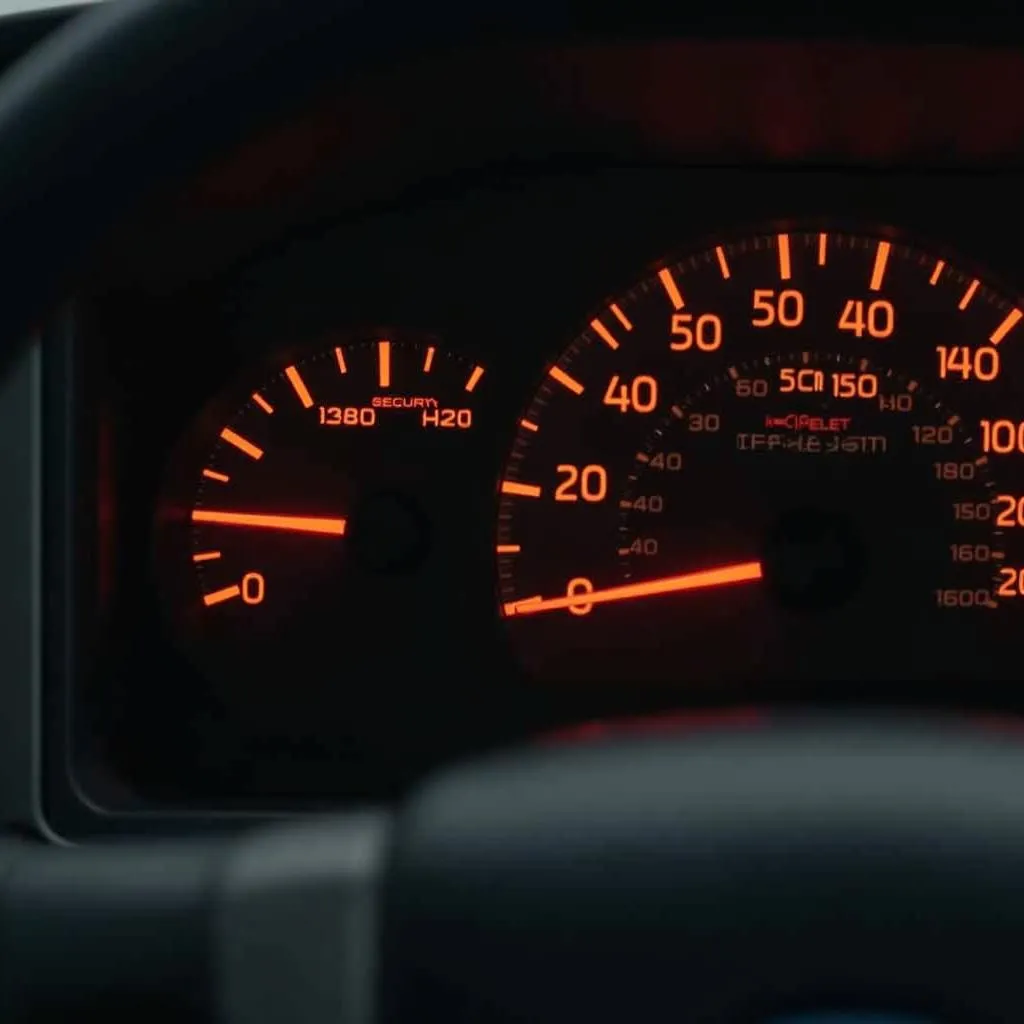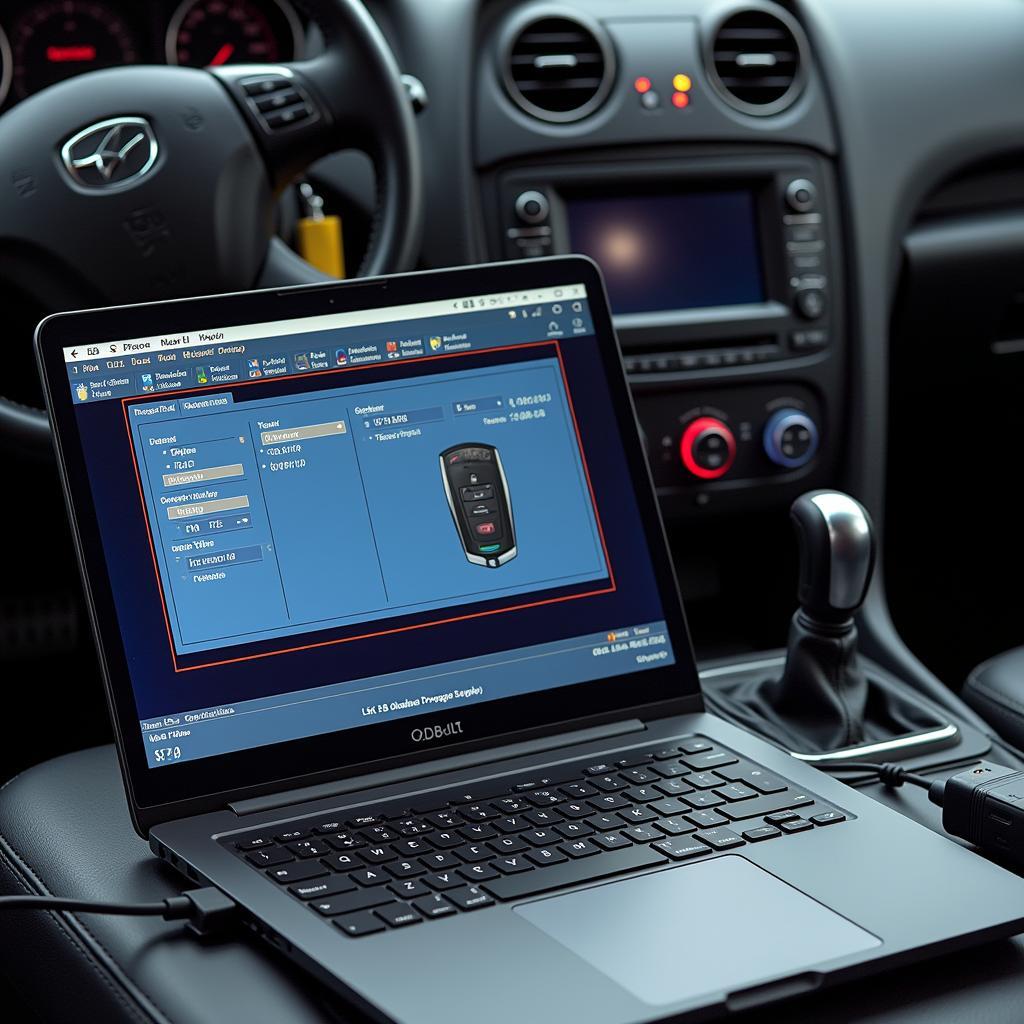The dreaded brake pad warning light on your Audi A3 dashboard – a sight no driver wants to see. This little light is more than just an annoyance; it’s a vital safety signal telling you it’s time to pay attention to your braking system. But what exactly does it mean, and what steps should you take when it illuminates? This article will guide you through understanding the A3 brake pad warning, potential causes, and what actions to take to ensure your safety on the road.
Understanding Your A3 Brake Pad Warning Light
Your Audi A3 is equipped with a sophisticated electronic system that monitors various components, including your brake pads. When the brake pad warning light illuminates, it indicates that the brake pad sensor, a small wire embedded in the pad, has detected wear beyond a predetermined limit. This is your cue to have your brakes inspected and likely replaced.
Common Causes of an A3 Brake Pad Warning
While worn brake pads are the most common culprit, several other factors can trigger the warning light in your A3:
- Worn Brake Pad Sensor: The sensor itself could be faulty or damaged, triggering a false warning.
- Low Brake Fluid: Insufficient brake fluid can also activate the warning light. It’s crucial to check your brake fluid levels regularly.
- Electrical Issues: Issues with the wiring or electrical connectors within the brake system can cause a malfunctioning warning light.
- Faulty ABS System: While less common, problems with the Anti-lock Braking System (ABS) can sometimes trigger the brake pad warning light.
What to Do When the Warning Light Comes On
- Don’t Panic: First and foremost, stay calm. While the warning light signifies an issue requiring attention, it doesn’t necessarily mean immediate danger.
- Assess Your Braking: Pay close attention to how your brakes feel. Do you notice any unusual noises, vibrations, or a spongy brake pedal? These could indicate severely worn pads.
- Check Your Brake Fluid: Ensure your brake fluid reservoir is topped up to the appropriate level. If it’s low, add the correct type of brake fluid recommended by Audi.
- Schedule an Inspection: Whether or not you notice additional symptoms, it’s crucial to schedule an inspection with a qualified mechanic specializing in Audi vehicles.
“Ignoring a brake pad warning light is like ignoring a flashing ‘check engine’ light – it’s crucial to address the issue promptly to prevent further damage and ensure your safety.” – John Miller, Senior Audi Technician
Diagnosing the Problem: Remote Software Solutions
In today’s technologically advanced automotive landscape, remote diagnostics and software solutions play an increasingly vital role in troubleshooting and repairing vehicles, including your Audi A3. Here’s how these services can be beneficial:
-
Remote Diagnostics: Certified technicians can remotely access your A3’s onboard computer system to retrieve diagnostic trouble codes (DTCs). This allows them to pinpoint the root cause of the brake pad warning light, whether it’s worn pads, a faulty sensor, or another issue.
-
Software Updates: In some cases, a simple software update to your A3’s brake control module can resolve the issue. Remote software installation services allow technicians to upload the latest software versions directly to your vehicle’s system.
The Importance of Timely Maintenance
Addressing the A3 brake pad warning light promptly is not only crucial for your safety but also for the longevity of your vehicle’s braking system. Ignoring the warning can lead to:
- Damaged Rotors: Driving with worn brake pads can damage the brake rotors, leading to costly repairs.
- Brake Failure: In extreme cases, ignoring the warning light can result in brake failure, putting you and others at serious risk.
“Regular brake inspections and timely pad replacements are essential for maintaining optimal braking performance and avoiding potentially dangerous situations.” – John Miller, Senior Audi Technician.
Frequently Asked Questions about A3 Brake Pad Warnings
How long can I drive with the brake pad warning light on?
It’s not advisable to drive with the brake pad warning light illuminated. Schedule an inspection as soon as possible.
How much does it cost to replace A3 brake pads?
The cost of brake pad replacement varies depending on factors like labor rates and the type of brake pads used. Consult with your trusted mechanic for an accurate estimate.
Can I replace my A3 brake pads myself?
While it’s technically possible, replacing brake pads requires specialized tools and knowledge. It’s recommended to have this service performed by a qualified mechanic.
How often should I check my A3’s brake fluid?
It’s good practice to check your brake fluid level at least once a month and top it off if necessary.
Can I use any brake fluid in my Audi A3?
No. Use only the brake fluid type specified in your A3 owner’s manual.
Conclusion
The brake pad warning light on your Audi A3 is a crucial safety feature that should never be ignored. By understanding its meaning and taking prompt action, you can ensure the optimal performance of your braking system and, most importantly, your safety on the road. Remember, regular maintenance and timely repairs are always better than dealing with the potential consequences of neglect.


